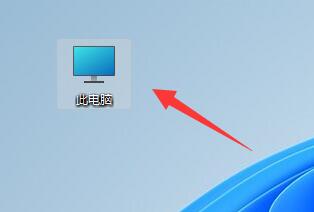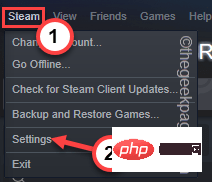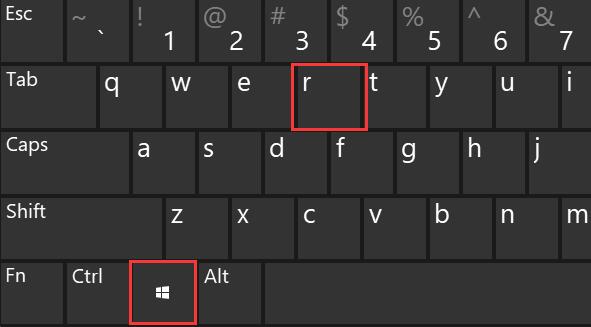 Backend Development
Backend Development Golang
Golang Evaluation of the status of the Go language: What is its position among high-level languages?
Evaluation of the status of the Go language: What is its position among high-level languages?
Evaluation of the status of the Go language: What is its position among high-level languages?
Go language, developed by Google, has gradually become popular since its release in 2009. As a statically typed, compiled programming language with powerful concurrency support, Go language occupies a unique position among today's high-level languages. This article will explore the position of Go language among high-level languages from several aspects and demonstrate its advantages through specific code examples.
First of all, in terms of performance, the Go language performs well with its efficient compiler and concurrency mechanism. The Go language excels at handling concurrent tasks, which is crucial for today's Internet applications. The following is a simple concurrency sample code:
package main
import (
"fmt"
"sync"
)
var wg sync.WaitGroup
func printHello() {
defer wg.Done()
fmt.Println("Hello")
}
func main() {
wg.Add(3)
go printHello()
go printHello()
go printHello()
wg.Wait()
}The above code uses the sync package to implement a simple concurrent task of printing "Hello" three times, and passes WaitGroup to wait for all tasks to be completed. This concurrency processing method is one of the characteristics of the Go language and one of the reasons why it has an advantage among high-level languages.
Secondly, in terms of development efficiency, the feature design of the Go language makes the code concise and clear, reducing the amount of redundant code. It has a garbage collection mechanism, built-in concurrency support and a rich standard library. These features allow developers to focus more on the implementation of business logic. The following is a simple HTTP server sample code:
package main
import (
"fmt"
"net/http"
)
func handler(w http.ResponseWriter, r *http.Request) {
fmt.Fprint(w, "Hello, Go!")
}
func main() {
http.HandleFunc("/", handler)
http.ListenAndServe(":8080", nil)
}The above code shows how to quickly build a simple HTTP server using Go language. A request processing function is implemented through concise code, and the functions provided by the http package are used to build the server and listen to the port. This efficient development method gives Go language a prominent position among high-level languages.
Furthermore, in terms of community and ecology, the Go language has received widespread support and recognition since its release, with a large developer community and rich third-party libraries. These libraries cover a variety of areas, allowing developers to quickly build various types of applications. At the same time, the official Go language team also actively maintains, updates and promotes the language, providing developers with a good learning and usage environment.
Finally, in terms of cross-platform, the Go language compiler can compile the code into executable files under various platforms, making the Go language have excellent cross-platform capabilities. This enables developers to run and test code on different operating systems, greatly improving development efficiency.
In general, the Go language is in a very superior position among high-level languages. With its excellent performance, efficient development methods, huge community and cross-platform capabilities, the Go language is gradually becoming a A programming language that attracts much attention and is widely used. I hope that the analysis in this article can help readers better understand and recognize the status of Go language in high-level languages.
The above is the detailed content of Evaluation of the status of the Go language: What is its position among high-level languages?. For more information, please follow other related articles on the PHP Chinese website!
 详细介绍如何在Windows 11上打开环境变量设置Dec 30, 2023 pm 06:07 PM
详细介绍如何在Windows 11上打开环境变量设置Dec 30, 2023 pm 06:07 PM环境变量功能是系统中的配置程序运行必备工具,但是在最新的win11系统中还有许多的用户不知道怎么设置打开,下面就给你们带来了win11环境变量打开位置详细介绍,快来一起学习操作一下吧。win11环境变量在哪:1、首先输入“win+R”,打开运行框。2、然后在里面输入命令:controlsystem。3、在打开的系统信息界面中,选择左侧菜单的“高级系统设置”。4、随后在打开的“系统属性”窗口选择下方的“环境变量”选项。5、最后在打开的环境变量中,即可根据需求进行相关的设置。
 Win11的启动路径以及如何打开它Jan 03, 2024 pm 11:13 PM
Win11的启动路径以及如何打开它Jan 03, 2024 pm 11:13 PM每一个Windows系统都有一个启动路径,如果你在其中添加了文件或软件,就会在开机的时候打开它。不过不少朋友不知道win11启动路径在哪里,其实我们只需要进入C盘的对应文件夹就可以了。win11启动路径:1、双击打开“此电脑”2、直接将该路径“C:\ProgramData\Microsoft\Windows\StartMenu\Programs\Startup”粘贴进路径框。3、这里就是win11启动路径了,如果我们要开机打开文件就可以将文件放进来。4、如果你根据这个路径进不来,可能是被隐藏了。
 如何在 Steam 中更改游戏下载位置May 10, 2023 pm 11:22 PM
如何在 Steam 中更改游戏下载位置May 10, 2023 pm 11:22 PMSteam是PC游戏玩家中最受欢迎的应用程序之一,因为您可以在Steam商店中找到任何主要游戏。它通过其用户界面简化了用户喜爱的游戏的下载、安装和管理。每当Steam用户想要下载游戏时,Steam都会使用应用程序的默认安装目录来下载和安装游戏。此位置默认为C:\ProgramFiles(x86)\Steam。问题来了,因为大多数用户在C盘上没有足够的空间,特别是对于占用大量存储空间的游戏,例如50–100GB。为了克服这个问题,Steam允许用户使用应用程序更改游戏的下载和
 windows10凭证管理器在哪里Jul 09, 2023 am 10:09 AM
windows10凭证管理器在哪里Jul 09, 2023 am 10:09 AM凭证管理器是用户用于管理web凭证和Windows凭据的一个作用,可是很多用户还不清楚windows10凭证管理器在哪里。其实凭证管理器就在操作面板上,大家在打开控制面板以后记得将查看方法改成小图标,那样就能见到凭证管理器了,点击查看就能查看各类信息了,如果想要查看大量,就需要输入账户密码。windows10凭证管理器在哪里:1、在系统中打开控制面板,点击右上角的查看方法,将类型转换成小图标。2、以小图标的方式查看以后,点击“凭证管理器”。3、进来凭证管理器以后,能够看见有关作用的介绍,主要用于
 了解pip安装包存储的位置和结构Jan 18, 2024 am 08:23 AM
了解pip安装包存储的位置和结构Jan 18, 2024 am 08:23 AM深入了解pip安装的包存放位置,需要具体代码示例pip是Python语言常用的包管理工具,用于方便地安装、升级和管理Python包。在使用pip安装包时,它会自动从PyPI(Python包索引)下载对应的包文件,并将其安装到指定的位置。那么,pip安装的包究竟存放在哪里呢?这是很多Python开发者都会遇到的问题。本文将深入探讨pip安装的包存放位置,并提供
 win11关机位置Jan 10, 2024 am 09:14 AM
win11关机位置Jan 10, 2024 am 09:14 AM如果我们要长时间离开电脑,那么最好将电脑关机保护它,那么win11关机在哪里呢,其实一般来说只要打开开始菜单,在其中就可以找到关机按钮了。win11关机在哪里:答:在开始菜单的电源按钮里。1、首先我们点击底部任务栏的“windows徽标”打开“开始菜单”2、打开后,可以在右下角找到“电源”按钮,如图所示。3、点击电源按钮后,就能看到“关机”了,点击它就能关机。4、如果因为死机等特殊情况无法关机,那么可以直接用电脑上的“电源键”长按强制关机。
 使用Apple的签入功能:iOS 17中的消息应用指南Sep 14, 2023 pm 09:13 PM
使用Apple的签入功能:iOS 17中的消息应用指南Sep 14, 2023 pm 09:13 PMiOS17中的Apple在“信息”中添加了一项新功能,可让您在安全回家时让亲人知道。它被称为签入,这是你如何使用它。无论你是在天黑后步行回家,还是在清晨跑步,你都可以在Apple的“信息”应用中与家人或朋友一起开始签到,让他们知道你何时安全回家。在您到达后,CheckIn会自动检测您何时在家,并通知您的朋友。当他们收到警报并且签入已结束时,您也会收到通知。如果发生意外情况并且您在途中被延误,CheckTab甚至会识别出您没有取得进展并与您一起办理登机手续,询问您是否要增加预计到达时间。如果您没有
 win10驱动安装路径详解Jan 04, 2024 pm 07:56 PM
win10驱动安装路径详解Jan 04, 2024 pm 07:56 PM在使用Windows10操作系统时,为了确保正常运行,我们需要安装相应的驱动程序。然而,很多朋友可能不知道在哪里可以找到Windows10的驱动程序。通常情况下,我们可以在C盘的drivers文件夹中找到Windows10的驱动程序。现在,让我们一起来了解一下具体的查找过程吧。win10驱动在哪:首先,我们需要按下键盘上的“Win徽标”和“R”键来打开运行窗口。在运行中,我们输入“devmgmt.msc”,然后点击“确定”。请展开想要查看的设备类型。如果你想了解更多关于设备类型的信息,请继续阅读


Hot AI Tools

Undresser.AI Undress
AI-powered app for creating realistic nude photos

AI Clothes Remover
Online AI tool for removing clothes from photos.

Undress AI Tool
Undress images for free

Clothoff.io
AI clothes remover

AI Hentai Generator
Generate AI Hentai for free.

Hot Article

Hot Tools

Dreamweaver CS6
Visual web development tools

DVWA
Damn Vulnerable Web App (DVWA) is a PHP/MySQL web application that is very vulnerable. Its main goals are to be an aid for security professionals to test their skills and tools in a legal environment, to help web developers better understand the process of securing web applications, and to help teachers/students teach/learn in a classroom environment Web application security. The goal of DVWA is to practice some of the most common web vulnerabilities through a simple and straightforward interface, with varying degrees of difficulty. Please note that this software

WebStorm Mac version
Useful JavaScript development tools

Atom editor mac version download
The most popular open source editor

MinGW - Minimalist GNU for Windows
This project is in the process of being migrated to osdn.net/projects/mingw, you can continue to follow us there. MinGW: A native Windows port of the GNU Compiler Collection (GCC), freely distributable import libraries and header files for building native Windows applications; includes extensions to the MSVC runtime to support C99 functionality. All MinGW software can run on 64-bit Windows platforms.





